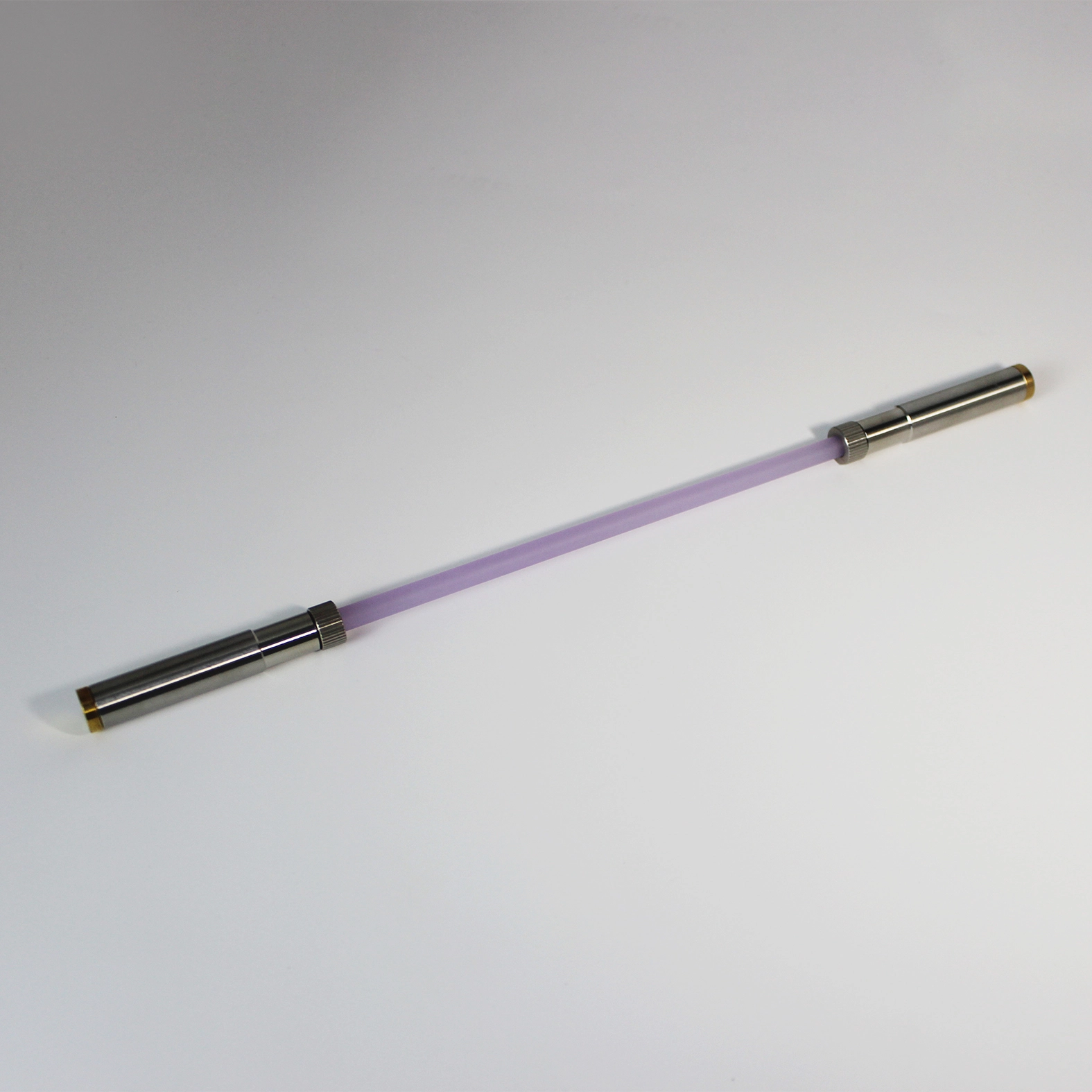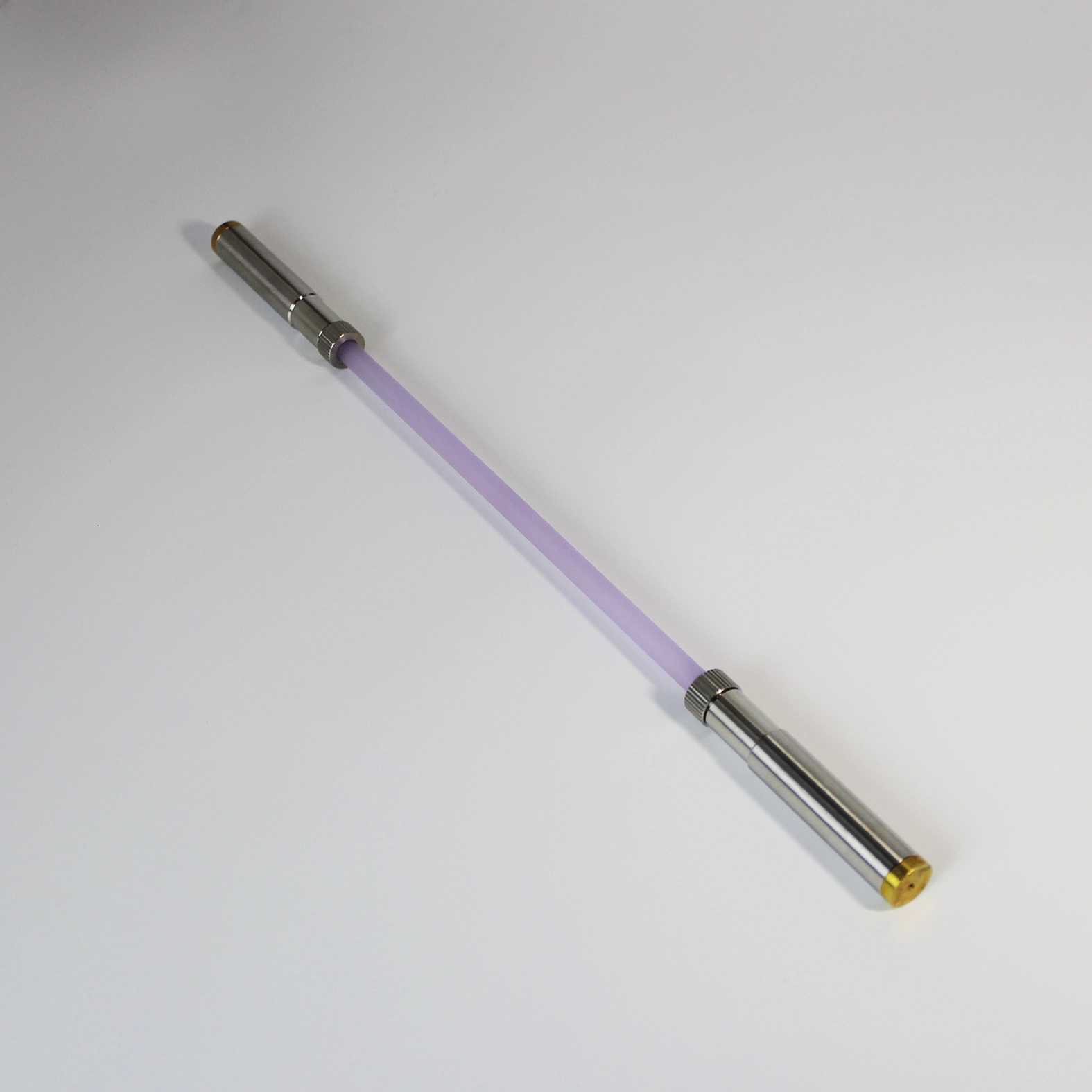YAG Crystal Laser Rod Lens
Dimension: Dia. 3.00mm
Thickness: 55.00mm
Tolerance : +/-0.10mm
Nd:YAG Rods Laser Crystal Lens
Neodymium doped Yttrium Aluminum Garnet (Nd:YAG) is the most commonly employed solid state lasing medium for material processing applications.
Nd:YAG has relatively good optical absorption and conversion efficiency, low lasing threshold and good thermal dissipation for high power operation.
Nd:YAG (neodymium-doped yttrium aluminum garnet; Nd:Y3Al5O12) is a crystal that is used as a lasing medium for solid-state lasers. The dopant, triply ionized neodymium, Nd(III), typically replaces a small fraction (1%) of the yttrium ions in the host crystal structure of the yttrium aluminum garnet (YAG), since the two ions are of similar size. It is the neodymium ion which provides the lasing activity in the crystal, in the same fashion as red chromium ion in ruby lasers.
Specificaitons of yag laser crystal lens
|
Specificaitons |
Data |
|
Technology |
Cooling Jacket |
|
YAG Diameter |
6mm |
|
Wavelength |
1064nm |
|
Dopping |
1% |
|
Length |
236.22mm |
Advantage of Nd:YAG Crystal
During the last decade, Nd:YVO4 has been developed as a promising substitutes for Nd:YAG in diode-pumped lasers due to its high absorption and emission cross-sections. However, the applications of Nd:YVO4 are limited due to its poor physical-mechanical properties and growth difficulty etc. Now, we have developed the high-doped Nd:YAG (SUPER-Nd:YAG) recently. It shows high absorption cross-section and have many advantages over Nd:YVO4:
Due to the cubic symmetry and high quality, Nd:YAG is easy to operate with TEMoo mode
- Nd:YAG can be Q-switched with Cr4+:YAG directly
- Nd:YAG can produce blue laser with the frequency-doubling of 946nm
Nd:YAG can be operated in a very high power laser up to kW level.
People also ask
- What are the benefits of YAG laser?
YAG Laser technology, which utilizes highly concentrated beams of light to penetrate the skin and ablate (vaporize) problem areas, can address sun damage, wrinkles, and scars. This technique, known as skin resurfacing, removes the top layers of skin.
- What are the side effects of Nd:YAG laser treatment?
Redness, swelling and itching immediately after the procedure that may last a few days after treatment. Rarely, skin pigment may absorb too much light energy and blistering can occur (this settles by itself) Changes in skin pigmentation.
- What does YAG mean in lasers?
YAG stands for the medium in which laser light is created (Yttrium Aluminum Garnett). It is a non-invasive, quick, safe, outpatient procedure and can be performed on both eyes at the same sitting if required.
- What is a Nd:YAG laser used for?
Nd:YAG lasers are used in ophthalmology to correct posterior capsular opacification, after cataract surgery, for peripheral iridotomy in patients with chronic and acute angle-closure glaucoma, where it has largely superseded surgical iridectomy, for the treatment of vitreous eye floaters, for pan-retinal
Our Ordering Process
Send us your request with detailed specifications
Receive a commercial offer with terms and costs
After your approval, we handle manufacturing, quality control, and shipping
📦 Shipping
3-5 days in EU, from 10 days to USA
💳 Payment methods
Cash, Bank Transfer, Cards (Visa, Mastercard, Amex, Discover) and PayPal
💬 Questions?
Contact us via WhatsApp, phone, live chat or email


